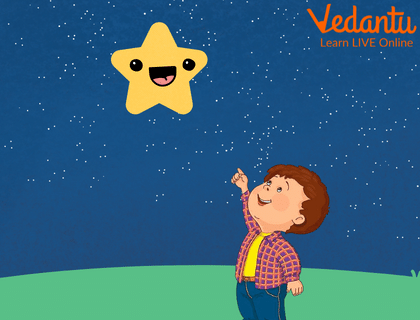Introduction to Twinkle Twinkle Little Star Rhyme
Alphabet Song, Baa, Baa, Black Sheep, and the famous French song "Ah! Vous dirais-je, Maman" from 1761 all share the melodic basis of Twinkle Twinkle Little Star.
The poem "The Star" by Jane Taylor was published in 1806 in a book named "Rhymes for the Nursery" by the same author and her sister Ann Taylor, served as the inspiration for the little star's lyrics.
Twinkle Twinkle Little Star Lyrics
Twinkle, twinkle, little star,
How I wonder what you are.
Up above the world so high,
Like a diamond in the sky.
When the blazing sun is gone,
When he nothing shines upon,
Then you show your little light,
Twinkle, twinkle, all night.
Then the traveller in the dark,
Thanks you for your tiny spark,
He could not see which way to go,
If you did not twinkle so.
In the dark blue sky you keep,
And often through my curtains peep,
For you never shut your eye,
‘Till the sun is in the sky.
As your bright and tiny spark,
Lights the traveller in the dark.
Though I know not what you are,
Twinkle, twinkle, little star.
Twinkle, twinkle, little star.
How I wonder what you are.
Up above the world so high,
Like a diamond in the sky.
Twinkle, twinkle, little star.
How I wonder what you are.
How I wonder what you are.

Twinkle Twinkle Little Star
Meaning of the Poem
In the "Twinkle Twinkle Little Star" song, a little kid greets a small star in the night sky. She finds its "twinkling" and brilliant spark to be fascinating. She thinks the stars of the night sky are like diamonds. The kid is highlighting how significant the star is in the night sky. Travellers in the dark can see the way because of its twinkling light. The girl also notices the star's light entering her bedroom via the blinds.Even though I don't know what a star is, I like the way it twinkles, the little child continues.
Origin of the Poem
The music of Twinkle, Twinkle, Little Star is well-known to people all across the world. It has at least 245 years of history! Although the modern song, Twinkle, Twinkle, Little Star, didn't exist before then, the French music was first printed in Paris in 1761. Poetry under the name of Ah! Vous dirai-je Maman (Ah! Will I tell you, Mother?) was printed with the melody of Twinkle, Twinkle, Little Star. Passionate love poetry, that was the poem. Later, a love song parody appeared. Another name for it was Ah! Vous dirai-je Maman.
Do It Yourself
1.What does the poet think the star looks like?
Twinkle.
Pearl.
Diamond.
None.
2.What does the poet explore and imagine?
How the stars twinkle.
What is a star?
Why is the star here?
To see stars in the sky.
Sample Questions
1. What is the Twinkle, Twinkle, Little Star rhyme scheme?
Ans: Jane Taylor's poem "Twinkle, Twinkle, Little Star" has five stanzas and uses a straightforward rhyme pattern of AABB CCDD and subsequent end sounds. Lines three and four of the last stanza conclude with the same final consonants as the first: "are" and "star."
2. Who is the author of the poem Twinkle, Twinkle, Little Star?
Ans: ‘The Star’ was published by Jane Taylor and her sister Ann Taylor. One of the nursery rhymes included in the book "The Star," which is a compilation of rhymes for young children, is Twinkle, Twinkle, Little Star.
Conclusion
This poem is written from the viewpoint of a little child who wonders and approaches the star directly to ask what it is because it is meant for children. The star is questioned about what it is and how far away it is from Earth, continuing the wonder from the first two lines of the poem. However, the children, who make up the majority of the film's audience, continue to remember the music and rhythm.


FAQs on Twinkle Twinkle Little Star
1. What does it mean, exactly, to be "Like a Diamond in the Sky"?
Alliteration is the use of similar words. When you utilise one item to describe another, you are using alliteration. Here, a star is being contrasted with a diamond, which on earth shimmers and glows when exposed to light. Even though we mimic the shape of a diamond with our hands while singing the song, this sentence refers to the characteristics of a diamond rather than its shape.
2. Why does Twinkle Twinkle Little Star exist?
The refraction of starlight by the atmosphere is what causes the stars to twinkle.
3. What symbolic language is Twinkle, Twinkle, Little Star using?
The phrase "because you never close your eyes" from the song "Twinkle, Twinkle Little Star" is an illustration of both personification and metaphor.





